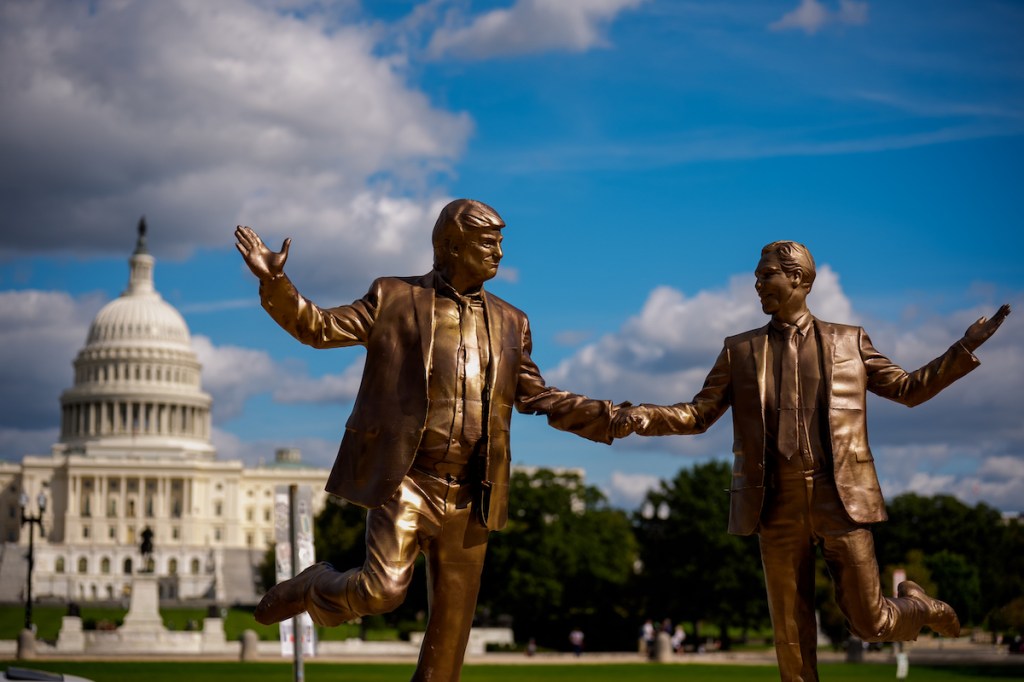A much-debated statue of President Donald Trump and the convicted sex offender Jeffrey Epstein has officially returned to Washington, D.C. after it was hauled away by the National Parks Service late last month.
The statue, previously titled The Secret Handshake, was meant to “celebrate” Trump’s ties to Epstein, as the work’s anonymous makers told ARTnews earlier this month. The artists said they were presenting the statue in tandem with Friendship Month.
It contains several plaques, including one that features the words, “A pal is a wonderful thing. Happy Birthday—and may every day be another wonderful secret.” Beneath them is Trump’s signature.
Related Articles

The text is a reference to the message Trump allegedly wrote to Epstein on his birthday. Though outlets like the New York Times have pointed out similarities between the signature on that note and Trump’s, the President has vehemently denied having written it.
Democrats have sought the release of more documents related to Epstein while Republicans have made efforts to ensure that cannot happen. In the House of Representatives, Republicans refused to swear in Adelita Grijalva, a Democrat from Arizona, whose signature would be the last one needed to force a vote on the dissemination of the files to the public.
The statue measures 12 feet tall, a height that the National Parks Service said was “not compliant” with what was stipulated in the work’s permit. The artists said the removal was “a literal example of the Trump administration toppling free speech when it has been legally permitted and approved because they are scared about whatever Trump is hiding in the Epstein files.”
During the removal, the artists said, the work had been damaged. Now, it has been repaired, and is once more on view on the National Mall.
“Just like a toppled confederate general forced back onto a public square, the Donald Trump Jeffrey Epstein statue has risen from the rubble to stand gloriously on the National Mall once again,” the artists told ARTnews in an email.
The artists said they had now retitled the work. Its new moniker: Why Can’t We Be Friends?

